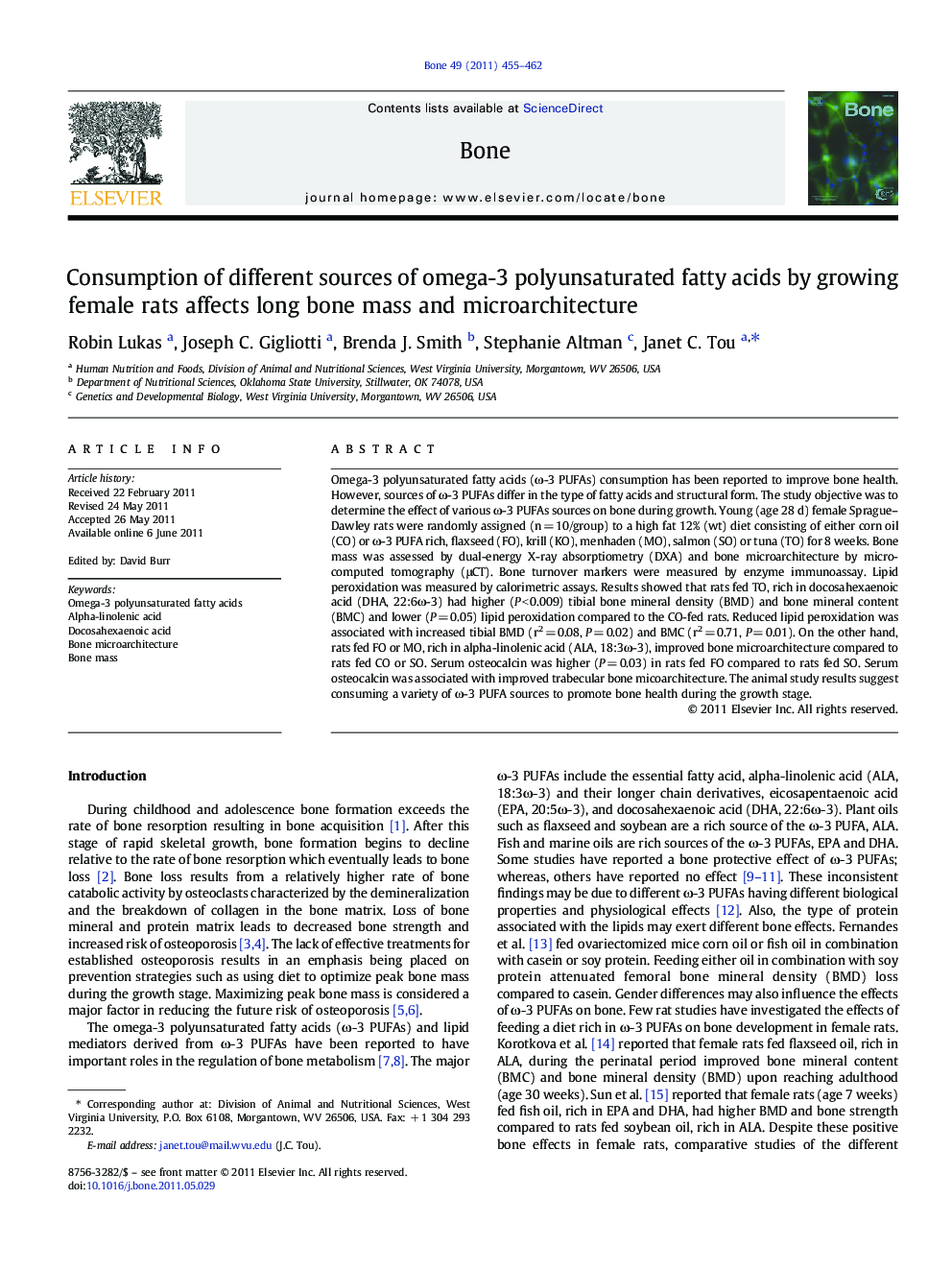| کد مقاله | کد نشریه | سال انتشار | مقاله انگلیسی | نسخه تمام متن |
|---|---|---|---|---|
| 5891814 | 1153281 | 2011 | 8 صفحه PDF | دانلود رایگان |

Omega-3 polyunsaturated fatty acids (Ï-3 PUFAs) consumption has been reported to improve bone health. However, sources of Ï-3 PUFAs differ in the type of fatty acids and structural form. The study objective was to determine the effect of various Ï-3 PUFAs sources on bone during growth. Young (age 28 d) female Sprague-Dawley rats were randomly assigned (n = 10/group) to a high fat 12% (wt) diet consisting of either corn oil (CO) or Ï-3 PUFA rich, flaxseed (FO), krill (KO), menhaden (MO), salmon (SO) or tuna (TO) for 8 weeks. Bone mass was assessed by dual-energy X-ray absorptiometry (DXA) and bone microarchitecture by micro-computed tomography (μCT). Bone turnover markers were measured by enzyme immunoassay. Lipid peroxidation was measured by calorimetric assays. Results showed that rats fed TO, rich in docosahexaenoic acid (DHA, 22:6Ï-3) had higher (P < 0.009) tibial bone mineral density (BMD) and bone mineral content (BMC) and lower (P = 0.05) lipid peroxidation compared to the CO-fed rats. Reduced lipid peroxidation was associated with increased tibial BMD (r2 = 0.08, P = 0.02) and BMC (r2 = 0.71, P = 0.01). On the other hand, rats fed FO or MO, rich in alpha-linolenic acid (ALA, 18:3Ï-3), improved bone microarchitecture compared to rats fed CO or SO. Serum osteocalcin was higher (P = 0.03) in rats fed FO compared to rats fed SO. Serum osteocalcin was associated with improved trabecular bone micoarchitecture. The animal study results suggest consuming a variety of Ï-3 PUFA sources to promote bone health during the growth stage.
Research highlights⺠Oils with the highest ALA content improved microarchitecture associated with increased bone formation. ⺠Oils with the highest DHA or EPA content as triglycerides increased bone mass associated with lower lipid peroxidation. ⺠Only krill oil high in EPA and DHA in phospholipid form failed to improve bone mass or architecture. ⺠None of the dietary sources of Ï-3 PUFAs used in the study improved both bone mass and microarchitecture. ⺠Results suggested a variety of Ï-3 PUFA sources should be consumed to improve bone health during the growth stage.
Journal: Bone - Volume 49, Issue 3, September 2011, Pages 455-462